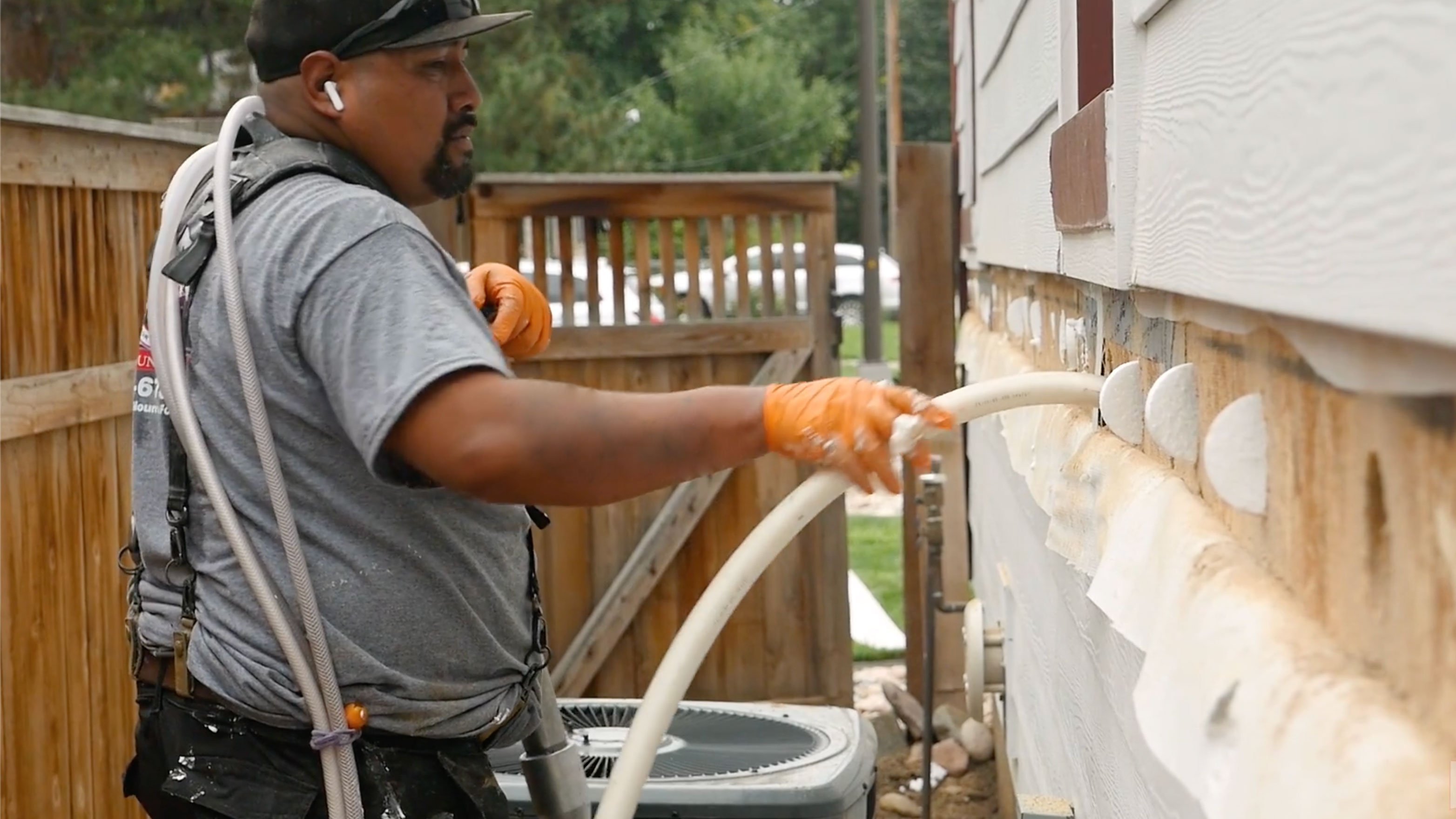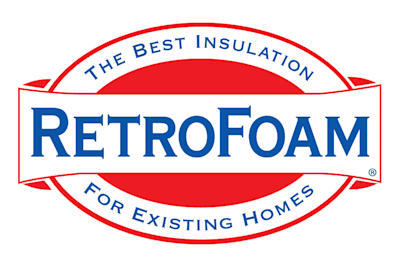Can You Inject Foam Insulation into Existing Walls? Here’s When it Doesn’t Work
injection foam insulation | RetroFoam insulation | Installation | foam university


You’re ready to make your home more comfortable and energy efficient with injection foam insulation, but sometimes, hidden conditions behind your walls can throw a wrench into your plans.
While foam injection insulation is one of the best ways to insulate existing walls without major renovations, there are rare situations where it just can’t be installed. But don’t worry, we’re here to walk you through the why and what you can do instead.
Let’s break it down.
Can You Inject Foam Insulation Into a Wall with Glued-In Cellulose?
One of the biggest obstacles to installing wall injection insulation is something called glued-in cellulose.
It’s not super common, but if your home was built using this method, it means mesh was installed inside the walls, and dense, sticky cellulose was blown in and adhered to the inner wall surfaces.
Why is this a problem?
Unlike fiberglass or loose cellulose, which can be compressed to make room for the foam, glued-in cellulose is stiff and unyielding. It blocks the foam from expanding into the cavity and even prevents the hose from moving freely inside the wall.
Bottom Line: If glued-in cellulose is present, foam injection insulation won’t work unless you completely demo the walls, which kind of defeats the purpose of retrofitting.
What if Your Home Doesn't Have Sheathing?
If you’re wondering, “Can you inject insulation into a wall without sheathing?” – the answer is no, and here’s why.
Sheathing is the solid material, usually OSB or plywood, that sits behind your siding and helps form the enclosed wall cavity needed for the foam to stay in place. Without it, there’s literally nowhere to inject the foam.
You do have a couple of options on how to proceed.
- Add sheathing during a siding replacement project. If you’re already planning to replace your siding, you can have sheathing added at that time. The foam can be sprayed directly into the open cavities before your new siding goes on.
- Install sheathing now. This is a more labor-intensive option, but you can remove your siding, install sheathing, and then proceed with injecting foam insulation.
Either way, the key is creating a sealed cavity for the foam to expand and stay in place.
Can Injected Foam Insulation Be Installed in a Wall with No Cavity?
Occasionally, we come across homes where there’s no wall cavity at all.
Sounds wild, right?
This usually happens in older brick homes where the structure is brick-on-brick: interior drywall on brick that has a brick exterior. That means there’s no space between the walls to insulate – no studs, no cavity, nothing.
Unfortunately, in this scenario, injectable wall insulation just isn’t an option. And frankly, very few insulation methods will work here without major structural modifications.
Can You Inject Foam Insulation into Walls with Thin Paneling?
Now, let’s talk about paneling, specifically stapled or nailed-in paneling using small finishing nails.
This situation isn’t a total deal-breaker, but it needs a little TLC.
Here’s the issue: Injection foam doesn’t expand like spray foam, but it does create pressure in the walls from the hose as it fills the cavity. That pressure can be enough to pop out those thin panels if they’re only held in place with light staples or nails.
So What's the Fix?
- Secure the paneling. Your contractor can use drywall screws to hold the paneling in place during the install.
- Have someone monitor inside. A good crew will place someone inside the home to monitor the walls for any movement while the foam is being injected.
- Remove the paneling temporarily. If you’re okay with a little demo, the paneling can be pulled off so spray foam can be applied directly into the open wall cavities. Once it’s trimmed, the paneling can be reinstalled.
A Good Contractor Will Talk You Out of a Bad Fit
Look, we know this stuff can be disappointing to hear, especially if you were pumped to upgrade your insulation.
But the important thing to remember is this: A good insulation contractor won’t try to push through a job that isn’t a good fit for foam injection.
They’ll walk you through your options, explain why it won’t work in your specific situation, and help you find a viable alternative, whether that’s waiting until you’re replacing siding or considering different insulation methods altogether.
If this raised more questions than it answered, don’t sweat it. Head over to our Learning Center for more videos, articles, and resources to help you make the best choice for your home.
Key Points:
- Injection foam insulation works best in enclosed wall cavities with sheathing and no obstructions.
- Glued-in cellulose can’t be compressed, so foam won’t work unless you demo the walls.
- Homes without sheathing need it added before foam injection can happen.
- If your home has no wall cavity (brick-on-brick), there’s no room to install insulation.
- Stapled paneling can sometimes be reinforced or removed to allow injection foam installation.
Related Articles
Repairing Plumbing and Fishing Electrical Wire Through Insulated Walls with RetroFoam
4 Injection Foam Insulation Problems
About Amanda Emery
Amanda previously has worked as a breaking news and crime reporter, TV news producer, and editor. As a journalist, she has won several awards from The Society of Professional Journalists - Detroit Chapter and the Michigan Press Association. Amanda uses her experience as a journalist to write content that will help educate homeowners on foam insulation benefits. When Amanda isn’t writing, she’s spending time with her husband Chris, daughter Lilith-Maeve, and rescued huskies Danger and Wendigo. She also loves knitting, making art, and cooking.



